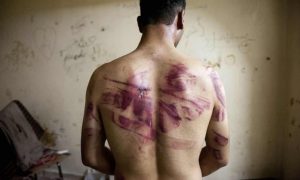This story focuses on psychologist Jan Kizilhan, a German of Kurdish Yazidi origin, and recent graduates of his program in Psychotraumatology at the University of Duhok, Iraq who are working with Yazidi children returning to their families after years in ISIS captivity. Judges called the piece “explanatory reporting at its best,” and praised the “equally matched excellence of the writing and photography.” They noted the “lean narrative style that builds momentum with deft pacing and layering of personal and contextual details,” and the “use of different visual techniques to convey in a metaphorical way the emotional inner turmoil of the children.” Originally published in the New York Times Magazine on October 31, 2019.
After the horror of ISIS captivity, tens of thousands of Iraqis — many of them children — are caught up in a mental-health crisis unlike any in the world.
By Jennifer Percy • Photographs by Adam Ferguson
Enas was contemplating suicide. She was only 17. For three years she’d been living in Mamrashan, a remote mountain camp for displaced people in the Kurdish region of northern Iraq. Mamrashan was just one of 16 camps scattered around Duhok, a province smaller than Connecticut. At its peak, Duhok was home to nearly half a million people displaced by the Islamic State, also known as ISIS. Many have yet to return home. Two weeks earlier, her 16-year-old cousin lit herself on fire in a camp bathroom, next door to Enas’s tent. She was too scared to go to the hospital and see her cousin’s melted skin. “I saw the smoke,” Enas told me. “I could smell the body.”
She often dreamed about the night that ISIS came to kill the men in her village and enslave the women. Enas is a Yazidi, a Kurdish religious minority group of some 700,000 people, most of whom lived west of Mosul in a district called Sinjar. Her family escaped on foot, sleeping in empty stores at night. One morning, she woke to learn that her uncle and his lover had killed themselves.
It was April 2019 when we met at the camp’s “psychosocial center,” a cluster of modular buildings on the edge of a field blooming with yellow flowers. Enas, whose last name is being withheld because she is a minor, wore jeans and a colorful sweater, her long hair twisted into a tight bun. She was being treated by Ziad Ahmad Basheer, a graduate student at Iraq’s first and only master’s program in psychotherapy. Called the Institute of Psychotherapy and Psychotraumatology at the University of Duhok, the program was founded two years ago and is overseen by Jan Kizilhan, a prominent Kurdish psychologist from Germany. Its mission is to train the first generation of psychotherapists in Iraq and to integrate licensed psychotherapy into the nation’s health system and eventually the broader Middle East. Basheer will be among the first students to graduate. One of his other patients was a Yazidi who fell in love with a jihadist. They met on Facebook, but he died before she could marry him. She had told no one but Basheer about her plans.
Enas couldn’t stop fainting. She was always fainting, and when we finished talking, she fainted. “This is very normal,” Basheer told me, about traumatized Yazidis. “They are trying to go to another place.”
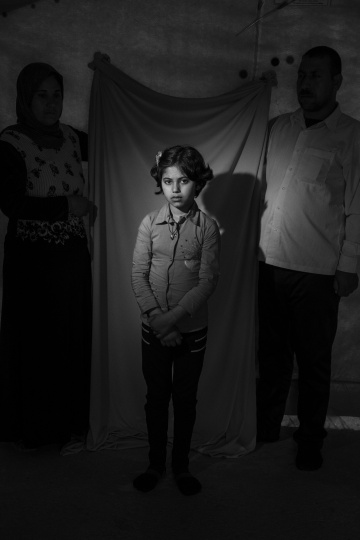
A few more of Kizilhan’s psychotherapy students were at the center that day, including Aylin Abdulsalam, who wore a cobalt blazer and high heels, her long black hair falling to her waist. A 27-year-old patient of hers, Zine Hessen, was too traumatized to talk much, so Abdulsalam talked for her. Hessen’s four brothers and three sisters had been missing since 2014. Just a week earlier, her 12-year-old nephew returned after being an ISIS captive for five years; he was famished and covered in scars, and he described being tortured. Hessen was happy to see him, but his return made her think about her brothers and sisters. “Maybe I’ll be happier if they are all dead,” she told Abdulsalam. “Because at least I’ll know they aren’t being tortured.”
When they started psychotherapy, Abdulsalam asked Hessen to retell her life story over and over again. “We don’t start with ISIS, because it’s too hard,” Abdulsalam explained to me. “We start from childhood and move chronologically.” She was using a relatively new cognitive behavioral therapy technique called narrative exposure therapy (NET), which was created during the Balkan wars as a short and pragmatic treatment for victims of torture and genocide. Trauma can devastate and reorganize autobiographical memory, making it hard for victims to feel safe in the present moment. By carefully going through the survivor’s autobiography, he or she finds distance from past traumas. Survivors have shown improvement after only a dozen or so sessions; it has been applied over the past 15 years in conflict zones, including Sri Lanka and parts of East Africa. At the end of each session, Abdulsalam read the life story Hessen had recounted back to her. “It made me feel like I was not alone,” Hessen told me.
Kizilhan, the head of the program, was talking with a patient in another room. He had thick salt-and-pepper hair and round reading glasses, and he wore a dress shirt with slacks and a suit jacket. Kizilhan, who lives in Germany, was in Iraq for five days with a pair of German politicians to secure funding for the continuation of the program.
Kizilhan’s life seemed to illustrate the question that now drives his work: How does the human soul survive atrocity? Born in a small Yazidi village with no electricity in Turkey’s Anatolian plains, he grew up listening to stories of farman, a Yazidi word for genocide. His grandfather was murdered in the mountains for refusing to convert to Islam, and following a 1971 military coup when Kizilhan was 5, he was told not to speak Kurdish. Two years later, he and his siblings immigrated to Germany, where his parents were already living. He grew close to two of his neighbors, who were Holocaust survivors, and became fascinated by the resilience of the human mind. He completed two doctorates, one in psychology and the other in minority religions of the Middle East, and has since published 25 books; his most recent is on the psychology of the Islamic State, a best seller in Germany. Now 53, he has spent more than 20 years treating refugees of war and genocide from all over the world.
At the psychosocial center, Kizilhan was meeting with Midya, an 8-year-old Yazidi girl who used to faint some 20 times a day. Kizilhan said he frequently received calls from doctors in Canada and Europe wondering what to do about fainting among Yazidis, especially among the women who had been raped. “The women are always having dissociations,” he told me. “Usually because of a trigger, a smell, or they might see something in the paper. To avoid the rape in their minds, they might faint and fall down. They live with a feeling of unreality and detachment from the world.”
Midya’s regular therapist was Ahlam Farhan Younis, another student in the program. Midya, who was held captive by ISIS, was a difficult case, and Younis had spent a year treating her before she showed any signs of improvement. The girl talked to invisible beings; she was depressed and overwhelmed by nightmares, and she cried all the time. Younis thought she had schizophrenia, but Kizilhan determined it was PTSD that was causing her disassociation.
Under his guidance, Younis developed a strategy: She let Midya sit next to her and just draw pictures. Midya seemed to enjoy it, but she would not speak. Then one day, after six weeks, Younis brought a doll to the session and said: “From now on, it’s you, me and the doll. You can tell the doll anything you want. You can even ask the doll about yourself.” After a few months, Midya’s symptoms were gone.
“Just to survive, she had to leave our real world,” Kizilhan told me. “She had to faint and fall down and disassociate. She told me she imagined falling to the ground, going someplace where she was surrounded by woods where she was sure no one would target or kill her.” Some people believed Midya’s behavior was abnormal, but, Kizilhan explained, it was a healthy response to immense stress. “It’s very normal to leave reality to survive,” he told me. But if it becomes too frequent, it can be pathological. “If you have to leave reality, the body will survive, but the soul will not.”
Mental-health care is almost nonexistent in Iraq. Throughout Duhok, there are nearly a quarter million displaced people and refugees still living in camps but only one psychiatric clinic and a half dozen counselors. Recent figures from the Iraqi Ministry of Health count just 138 psychiatrists and 60 social workers in a country with a population of more than 38 million. That’s one psychiatrist for every 275,000 people. Iraqis have suffered under almost 40 years of continuous conflict — a torturous dictatorship, the eight-year Iran-Iraq war, the two gulf wars, years of devastating economic sanctions, a civil war, the Islamic State — and yet the country has almost no trained professionals to treat an epidemic of war-induced psychological disorders.
It is estimated that almost one in five Iraqis suffers from mental illness. In a 2016 study of psychological disorders among young Iraqis, 56 percent reported symptoms consistent with PTSD, and more than 60 percent reported symptoms consistent with depression. Kizilhan estimates that the rate of depression in the general population is more than double that of Western countries. The situation in the camps is especially catastrophic. A recent study by researchers at Bar-Ilan University in Israel found that more than 50 percent of female Yazidi former captives display signs of what psychologists now refer to as “complex” post-traumatic stress disorder (C-PTSD), a severe and intractable variant of the disorder often experienced by people who have been abused over a long period of time. Many people in the camps are also manifesting signs of bipolar disorder, and suicide rates have been rising among women. Kizilhan himself has already documented about 60 suicides in Iraq among women kept as sex slaves by ISIS.
For those Iraqis who do seek mental-health care, especially those in rural areas, the cultural stigma is immense; doing so puts their family’s reputation at risk. An Iraqi Ministry of Health study from 2010 found that 59 percent of respondents believed psychological problems came from “personal weakness,” and more than half said they would feel ashamed if a family member received a diagnosis of mental illness. Many of those who do go to doctors face misdiagnoses at the hands of primary-care physicians with little to no training in mental health. The Lancet reported that doctors in both Iraqi Kurdistan and southern Iraq rely heavily on prescription drugs instead of therapy, in part because therapy is too time-consuming. The government-run health care system is outdated, with hospitals that are understaffed and that regularly run out of lifesaving medications.
As recently as the 1960s, though, Iraq was one of the region’s leaders in health care spending and home to some of the most advanced psychological treatment in the Middle East. There were psychiatric units in general hospitals and mental-health programs in schools. All health care in the country was free. But under Saddam Hussein, this progress was reversed; the Baath Party slashed health care funding by 90 percent. The nation’s medical societies themselves came under the control of the party, prompting thousands of doctors and health care workers, including psychiatrists and psychologists, to flee the country in fear. Others were kidnapped or threatened with extortion and death. In a 2008 report in The DePaul Journal of Health Care Law, Khudair Abbas, Iraq’s former interim minister of health, describes people with mental illness living in “prisonlike conditions” where “inhumane treatment of patients was symptomatic of Saddam Hussein’s dictatorship, which tortured and murdered thousands of Iraqi citizens.”
The United States’ invasion of Iraq in 2003 made things even worse. The “shock and awe” stage of the invasion was followed by widespread human rights abuses and daily violence from all parties. Hospitals transformed into military stations. In the years after, fighting between Sunni and Shiite factions intensified. A 2006 study in The Lancet reported that almost half of all elementary-school-age students in Baghdad had suffered some sort of major trauma; that same year, the Association of Psychologists of Iraq found that a staggering 92 percent of the nation’s children had experienced learning impediments because of fear and insecurity. A 2007 survey found that nearly 60 percent of Iraqis had experienced traumatic events, while less than 7 percent had access to treatment. Among those with any mental disorder, 68 percent reported having suicidal ideas. By 2008, Iraq had just two psychiatric hospitals, which were poorly stocked with equipment and medication. One of the two was Baghdad’s Al Rashad, whose walls had been knocked down by American tanks when the Marines arrived in 2003. The hospital was looted, the patients ran free and the soldiers set up a command post in the nursing school. By the end of the decade, the situation was so bad that for lack of better options, patients were receiving electroshock therapy without anesthesia. By 2011, half the medical work force in Iraq had fled the country.
Then, beginning in early 2014, as ISIS tried to establish a caliphate in northern Iraq and in Syria, millions of Iraqis faced a new horror. Tens of thousands of people were persecuted, taken hostage, separated from their families, tortured, raped or executed. The capture of Mosul by ISIS that June led to one of the single fastest displacements in recorded history. (Nearly 500,000 people fled Mosul in a single weekend.) Many of those who remained were too afraid to leave their homes, sometimes living for months in isolation. Children were lashed, and executions were common. Escape was possible only under cover of night, and only by dodging snipers and avoiding land mines. After taking Mosul, ISIS moved west, toward Sinjar, and began a campaign of terror against the Yazidis. Men and elderly women were executed and dumped in mass graves. Kidnapped boys were routinely forced to become fighters, while women and girls were tortured and sold as sex slaves. Systematic rape of women was part of the group’s plan; some were raped for weeks and others for years. Girls as young as 8, perhaps younger, were raped. On an online marketplace popular with ISIS, one man offered to trade a pair of Adidas shoes for a Yazidi girl. Yazidi boys also reported being sexually abused by ISIS men.
Residents of Mosul fled to the Hamam al-Alil camps, south of Mosul. Most were Sunni Muslims who survived ISIS. To get to the camps, my translator and I drove past the Grand Mosque, the backdrop to many beheadings, and then over the Tigris River, past the old castle where the last of the ISIS fighters were gathered by Iraqi forces and then, one by one, executed and tossed into the river below. The camps, a temporary home to roughly 50,000 people, were surrounded by blown-up buildings and glittering scrap piles. An agricultural college near the camps had been an ISIS base; after Iraqi forces secured the area, corpses were found protruding from the ground near a swimming hole. Memories of the caliphate were tough to escape, and daily life was difficult. “Even if these people survived the occupation of ISIS,” Virginia Lee, a mental-health manager with Doctors Without Borders, later told me over the phone, “they are also dealing with layers of trauma from past conflicts over the decades, and maybe they never dealt with the trauma before ISIS.”
A 2017 report by the international nonprofit organization Save the Children found that children living in a settlement near Mosul and at the Hamam al-Alil camps frequently spoke about an unidentified “thing” or “monster” that haunted them day and night. They reported being beaten by family members or witnessing domestic violence. These were children who saw dead bodies in the streets, bloodied faces and bombs falling on their homes. Some children watched their families die right in front of them.
Almost all the children had lost a loved one and showed signs of toxic stress, the report found. Almost all were slow to understand instructions and found it difficult to play or show emotion. When offered an imaginary “magic bag” and asked what they would make disappear in it, a majority of the children said ISIS. The previous year, UNICEF reported behavioral changes in more than three-quarters of the children living in Kurdistan. Unusual crying and screaming were the most common behaviors, followed by sadness, nightmares and violence. Ibrahim Abou Khalil, a former director of mental-health services for International Medical Corps in Iraq, said children told him that they sometimes wished ISIS had just killed them. “No one talks about Iraq anymore,” he told me, “but if mental health is not addressed, it’s going to be a nationwide crisis.”
Kizilhan traveled to Duhok in August 2014, just three days after ISIS began its genocide against the Yazidis. The Yazidis wanted his help: Could he do anything? Could he call politicians? They sent him names of the dead, the missing, the ones who fled. “I was feeling very helpless,” he told me. “No one thought ISIS would go to Sinjar. People were talking about a massacre, but it wasn’t yet clear that it was genocide.” He brought attention to the killings by publishing an article in Bild, Germany’s best-selling newspaper, with the headline “Step by Step, ISIS Carries Out Genocide.” The article caught the attention of politicians across Germany, most of whom had never heard of the Yazidis. The minister of Baden-Württemberg offered to help. He and Kizilhan organized a program called the Special-Quota Project, which would bring Yazidi women from Iraq to Germany for psychological care and rehabilitation.
Kizilhan met individually with 1,403 women at camps across Duhok and ultimately secured funds to take 1,100 of them out of the country. The whole operation took six months, and each story he heard seemed worse than the last. The trauma among the Yazidis was the most significant he’d ever witnessed. One woman, believing ISIS fighters were at the camp, lit herself on fire so that she would be, he recalled, “too ugly” to be raped. Her nose and ears burned away, and one eye sealed shut. A 26-year-old woman told him that a member of ISIS had put her 2-year-old daughter in a tin box and left her in the sun for seven days. After he pulled her out, the man then broke the girl’s back by holding her high in the air and slamming her on the floor. This is how all disbelievers have to die, he told the mother.
“I will never forget the story of one 8-year-old girl,” Kizilhan told me. “She was raped hundreds of times by dozens of men. She was so young and so small.” The children kept asking him: Why does ISIS do this to us? He didn’t have an answer, so he later went to a couple of prisons outside Kirkuk to interview captured fighters. Over and over again, the fighters told him: We kill them because they are not human.
The women and children who were relocated to Germany benefited from rehabilitation; many were able to achieve a sense of normalcy in their lives. The most famous of Kizilhan’s cases is Nadia Murad, whose family was killed by ISIS before fighters took her to Mosul. She was raped and beaten for three months until she escaped. After she was treated in Germany, Murad began to speak publicly about her rape, in order to draw attention to the plight of Yazidi women. Last year she was a recipient of the Nobel Peace Prize.
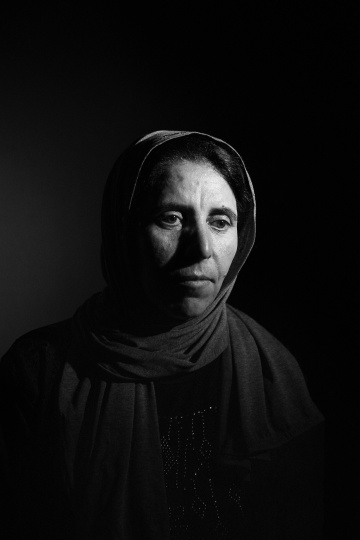
Kizilhan met Murad in 2015. She was living in a tent in the Sharia camp in Duhok. “She was sleeping and crying and now — how does she get this power? This power I’m sure is coming from her ancestors,” Kizilhan said. “These are resilient people, and Americans don’t always understand this kind of resilience, but it’s been shown that the traumatized grow with their trauma and change society for better.” Mohammed Abbas, an Iraqi-born British psychiatrist, also emphasized the resilience of the Iraqi people; he worried about viewing them only through a Western lens. “There is an assumption of vulnerability in the West,” Abbas told me over the phone, “but we have a collectivist society, which gives meaning to life.”
Kizilhan knew he couldn’t keep sending people to Germany for psychological treatment. They needed to be treated at home. They needed therapists in Iraq and in the Middle East, so that patients could converse in their own language, amid their own culture. But his vision would require the adaptation of Western psychology to a non-Western society. Around 80 percent of mental-health research is conducted in America, Canada and Europe, and patients from other countries have different perceptions of disease and healing. In Iraq, people suffering from psychological disorders often consult religious healers or rely on home remedies, in part because of the stigma around these disorders.
Transcultural psychotherapy, a relatively new field, is all about taking such cultural context into account. Kizilhan has been advancing the field for decades in Germany. In 1999, he joined the Michael Balint Clinic, where he founded a program that treats Turkish, Kurdish, Arab, Persian and Russian immigrants in their native languages. Later he founded the Institute for Transcultural Health Science at Baden-Württemberg Cooperative State University, which focuses on the “internationalization” of health research. In his experience, roughly 60 percent of diagnoses given to refugees in Germany are incorrect in some way, because of a lack of cultural knowledge on the therapist’s part. “You need to know the religion, coping strategies, the language,” he said.
For example, he explained, the Yazidis used different metaphors for pain. On his first visit to the camps, a woman said: “I have a burning liver.” He was confused. Had she drunk too much alcohol? Instead, he learned, a “burning liver” was analogous to a broken heart; the liver was the body’s emotional center. Family also had to be a part of the process of healing for Yazidis. Women who were raped needed to talk to their family, so psychotherapy sessions would have to include group therapy. And while Western society emphasizes the individual, the Kurds — who have faced transgenerational and collective trauma — rarely talk about themselves as individuals. “The past is still part of individual trauma, and you cannot separate it,” Kizilhan said.
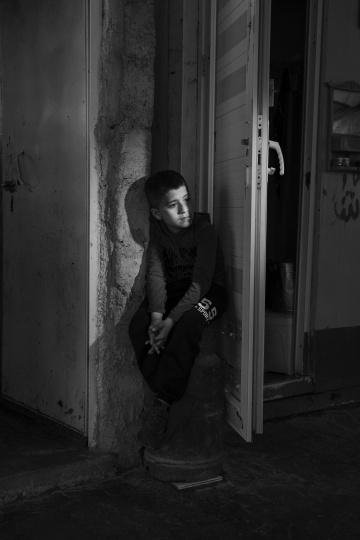
In 2016, Kizilhan met with the president of the University of Duhok about starting Iraq’s first master’s program for psychotherapy. Duhok seemed like the ideal location — safe in the mountains, in a place that had never been under ISIS rule, and close to the Yazidi camps. With funds from Germany, Kizilhan founded the program in 2017.
The first students — a mix of ethnic and religious groups — matriculated that February, and this November they will graduate as licensed psychotherapists. The students pay no tuition; the program is supported by the foreign ministry of Germany, the German state of Baden-Württemberg and the University of Tübingen. The curriculum is modeled after a European standard for a master’s in psychotherapy and is staffed by professors from Germany, Britain, Italy and Sweden. Every semester, the professors fly to Iraq for two weeks and then remain in touch with students over Skype and email. Kizilhan said the curriculum will change and adapt to the culture of Iraq, and eventually they’ll staff the program with Iraqis, not Europeans. The institute is already training its top students to become teachers.
Aasma Ibrahim, a third-year student, worked with a local NGO in the camps before she applied to the program. “For Iraqis, this is a completely new approach to dealing with abnormal behavior,” she said. “Sometimes the patients don’t agree to do the psychotherapy because it’s hard. Maybe it induces flashbacks or intrusions. Sometimes they don’t believe it will help them, and they’d rather take drugs. It’s not easy, but we try our best.”
Mohammed Saeed, another third-year student, thought the patients had a right to be skeptical. “They don’t know about PTSD. They don’t know about trauma or its manifestations. They think they are crazy.” A vast majority of his patients, he said, arrive with physical problems that later turn out to be psychosomatic and can’t be fixed by a primary-care doctor. “It’s my opinion that 80 percent of people in the country with psychological problems don’t know they have them,” he said.
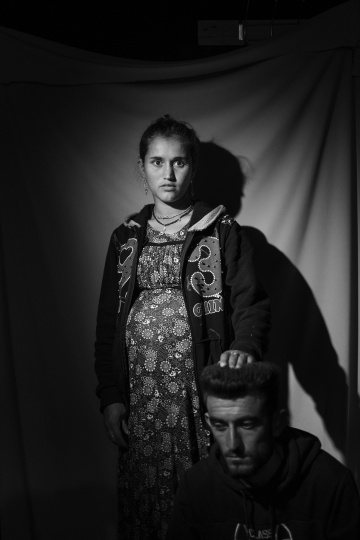
Many of the students themselves were victims of ISIS or lost family to Hussein’s genocidal campaign against the Kurds, or both. They all have their own trauma that can flare up in their conversations with patients. This is why, every March, the students fly to Germany for two weeks to discuss their own mental health. They talk to psychologists about how to deal with their traumatic experiences and how to manage the psychological toll of working with trauma patients.
With the master’s program, Kizilhan hosted the first International Conference on Genocide in Duhok last year.Survivors from 18 countries were invited to participate. During a panel, a Muslim woman from Bosnia talked about being raped and losing her family. Seated next to her was a Yazidi girl. After they had shared their stories, they looked each other in the eyes, then starting crying and hugging. They had the same story. “We just believed we were the only ones in the world,” the Muslim woman told Kizilhan. “This is the process,” he told me. “This is how you understand.”
In the winter, the mountains of Duhok are snow-covered, and in the spring the rivers flood with rain. On some of the highest peaks stand the ruins of Hussein’s vacation homes, still guarded by unexploded mines. The region’s capital, also called Duhok, is thought to be the safest in Iraq.
When I visited the camps in April with a translator and a photographer, it had been just weeks since the fall of ISIS. The battle for Baghouz, ISIS’ final fight against American and Kurdish-led forces, ended this March, sending a stream of freed captives to the Al Hol camp in Kurdish-controlled Syria.It was a holding pen for the newly displaced, filled with both innocent civilians and ISIS loyalists. Since Yazidis had been victims, they were sent home as soon as they were identified as such. Busloads of newly freed Yazidis were arriving at the camps every week, reuniting families after years apart.
It was twilight when we arrived at the Qadia camp, close to the Turkish border and high on a hill near the mountains. Families lived along dirt roads in rectangular trailer homes. We searched for a family from a Yazidi village called Kocho who had just returned from captivity. A 10-year-old boy who had been imprisoned by ISIS for three years showed us the way.
The family’s home was empty but for a few cushions and a small kitchen. The mother, Amina Ammu, was 46. She was with her two children, Mohammed and Sarab, 10 and 15, and her 14-year-old nephew, Teyman, whose parents died in the fighting.
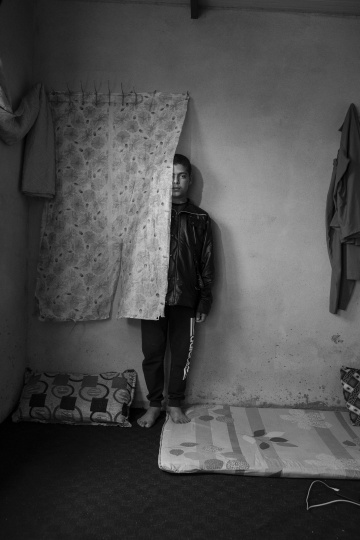
Sarab wore jeweled pants and heels, and she talked while tapping on her phone. “Yeah, they were beating me up,” she said about ISIS. “They were beating me. I couldn’t play with my cousin, it was haram.”
Sarab rolled her eyes often and told me and the photographer that we were useless. ISIS had taught the children to be more confident and straightforward than Ammu remembered, and she was shocked by her daughter’s behavior. “How dare you?” she said repeatedly. Sarab was in a bad mood, she replied, because the internet connection wasn’t working. She had just returned from Syria the day before — it was only the second day she had seen her mother in five years.
Mohammed had been back for a week. He had big eyes and a baby voice, and he wore his favorite soccer jersey. He and Teyman spoke to each other in Arabic, which ISIS had taught them, and played a video game on their smartphone called PlayerUnknown’s Battlegrounds, or PUBG, in which competitors vie to be the last one alive. “We never had a mobile phone in the caliphate,” Teyman said. “We had real PUBG there!”
Teyman had also gotten back a day earlier. His leg was full of shrapnel. He had gone to fighter school and learned to kill infidels. “It was nice,” he said about the school. “I liked it.” Mohammed said the caliphate was “very good,” although he hated fighter school. “I didn’t go to a battle, but I trained a lot to hit targets, and I’m a good shooter,” he said. “I’m not just saying that.”
Sarab started to laugh. She’d been at Al Hol longer than the others because she didn’t tell anyone she was Yazidi. “I wanted to stay in the camp and be like them,” she said. “We were raised by Daesh” — an Arabic acronym for ISIS — “and we were taught about their religion, and I liked it.” She showed me a photo from her caliphate days. “This was the house we lived in, and it was underground,” she said. She was on the porch, wearing a black robe and a black veil. “I was a genuine Daesh there!” she said, still laughing.
I asked if it felt good to laugh about it.
She shrugged. “It was not real,” she said. “It’s funny.”
Many children changed significantly while living in captivity, where they saw other children used as suicide bombers and human shields. To train a child to kill, ISIS began with small acts of aggression. The boys would get a slap from an ISIS fighter — one of the trainers — and then be told to kick another boy. “To be hurt, and to hurt,” Kizilhan explained. “It can be taught, and with time you lose your feeling of empathy.” This, he thinks, is the danger of intimate violence. Violence becomes a mode of being, a way to solve problems.
“For the Americans who are very far from wars, it’s something they cannot imagine,” he said, “but if you grow up in war, you can develop feelings that it is very normal to hurt and kill someone. I assure you that in America, take New York, if one person will declare a dictatorship, 30 percent of people will be able to torture or kill other people.”
This is also a crucial part of his psychotherapy movement in Iraq: It’s a peace project. If physical violence persists for too long, and if trauma goes unresolved, it can have a self-perpetuating effect, creating a culture of violence. “In my opinion, besides psychotherapy, this program also teaches the patients to deal with aggression and anger,” Kizilhan said. “If you don’t have psychotherapy, how can you start the reconciliation and peace process? It teaches them that they don’t have to kill someone to resolve an issue; they can sit down and talk with their enemies as part of the peace process. This is a Western idea, but it’s a good idea. Instead of fighting and killing each other, maybe we should talk to each other?”
ISIS had hoped that the children would carry their ideology back into society, sickening it from within. “Psychotherapy is also effective for combating brainwashing,” Kizilhan told me. “It just takes longer, maybe two or three years. But children are much easier than adults to deprogram.”
Most Yazidi children converted to ISIS’ version of Islam because they wanted to avoid execution, but the forced conversion brought with it feelings of shame and guilt. Even in Mosul and other Islamic areas, victims were forced to follow a perverse version of Islam.
By this spring, almost all the recently freed children had lived in the Islamic State for five years — often a majority of their lives. Many, like Delivan, a 10-year-old with a shaved head, didn’t even recognize their families. When the photographer, the translator and I met Delivan, he had been back in Iraq for a month. He sat on a rusty propane tank and drummed his feet. Bakir was the name given to him by the Islamic State, and when he didn’t respond to Delivan, the translator said, “Bakir,” and he immediately looked up.
“I’m very worried,” his mother said. “Sometimes he cries for hours. When we ask what’s wrong, he says nothing. He is very angry and beats us. He beats me, and he beats all his brothers.” I asked how he learned to fight. “I shaved his head when he came back,” she said, “and saw it was wounded in more than 25 places. I asked him what happened, and he said the other kids used to stone one another on a daily basis.”
All her children were kidnapped by ISIS, but Delivan, the youngest, was in captivity longest. He had lived in the Iraqi city of Tal Afar until ISIS executed his captor, a man who smuggled Yazidis to freedom for money. Delivan was sold to another family, along with his older brother, who had been an ISIS fighter. Delivan’s brother had been shot in the leg and treated in a hospital. The night he was discharged, he accidentally caught his shirt on a hand grenade and blew himself up. Later, Delivan was trapped in the village of Baghouz during the final battle with ISIS. The shelling never stopped, and people died all around him.
Delivan slid off the propane tank. He was suddenly confused about who we were and what we wanted. “How do I trust them?” he asked his mother. “Are they mocking me?” He hit her, then curled into a ball and cried.
At the start of the program in 2017, Kizilhan met NGOs and social workers practicing psychotherapy in the camps. Kizilhan’s colleague Mamo Othman, a German-Yazidi with a doctorate in psychology from the University of Tübingen, explained: “Many NGOs came to Iraq, training men and women with bachelor’s degrees in psychotherapy techniques. They trained for two weeks, and they were telling them: You’re psychotherapists!”
Kizilhan and his team set up a few meetings with NGO workers in the camps and recommended that they work together. “They can be helpful,” Kizilhan explained. “But they are not psychotherapists. Psychotherapy is a scientific method.” Those who weren’t trained in cognitive behavioral therapy should focus on stabilization, he recommended, not psychotherapy. Stabilization was necessary, after all, before the psychotherapy could begin. He asked the social workers to recommend cases to his students. “But we are still a small group,” he added. “So we can’t help everyone.”
The situation was desperate, and counselors were doing the best they could under difficult circumstances. Ilyas Barakat was one of them. An Iraqi counselor with an undergraduate degree in psychology, he now worked at a center for children who escaped ISIS, run by an organization called Springs of Hope. “I treat kids by playing games with them,” he said. “Things like jumping rope, throwing darts, play dough, Go Fish, Hungry Hungry Hippo.” One boy had kicked him in the genitals. “A lot of them,” he said, “give me a look of death. It’s like they want to fight me when they see my face.” The aggressive boys put on gloves and pummeled a punching bag. Barakat let them fight to exhaustion. “To empty the energy,” he explained.
He showed me a photo of two boys wearing sandals and pants rolled to the ankles. It was the style of ISIS, another habit they learned in captivity. “This is very normal,” he said. “But it’s hard to change them. Sometimes when I talk to them I realize, they are speaking just like the ISIS guys. They speak pure Arabic, and they swear to the greater god.”
Badr Jamal was another Iraqi counselor at the Kabarto camp, in the Duhok region. “You are an infidel,” he remembers a boy telling him. “You deserve to be killed.” The boy continued, “I live with my uncle and his family, and if I have a chance, I will kill them all because they are all infidels too.” Jamal realized that he didn’t have the skills to treat the child, so he sent him to a rehabilitation center outside Erbil. “Last year,” he added, “I met an 8-year-old ISIS survivor who tried to behead his little brother. He cut his throat with a knife.”
Every day these social workers walked through the camps and talked to the residents. If they suspected someone was in psychological distress, they put the person on a list. Students at the master’s program used this list to find new cases. But they could reach only a fraction of the tens of thousands of people who needed help.
No one had yet come to help Sumaya Ahmad, a pregnant 21-year-old in a purple dress. I met her at the Kabarto camp, and we spoke away from her family. She was about 16 when ISIS arrived in Kocho. ISIS imprisoned everyone and then offered an ultimatum: Convert to Islam or die. The villagers refused to convert, and the killings began on Aug. 15, 2014. ISIS executed dozens, possibly hundreds of the men and teenage boys and left them in mass graves. Boys went to ISIS military camps, while the women and girls were sold as slaves and sexually abused. Ahmad was shipped to Tal Afar and then to Syria. She was kept in a house with one of her sisters and two cousins. Their ISIS captor beat her day and night, and, she said, “He was raping everyone.” Her sister died in an airstrike. Ahmad was sold and sold again. “I thought it would never end,” she said. “I thought about killing myself.”
A year ago, she was smuggled back to Iraq with borrowed money. “I never go outside,” she told me. “The farthest I go is to that doorstep. I feel sad and still think about committing suicide.” She recently married a man at the camp, but she said the wedding was depressing because her husband’s family was still waiting for six children to come home. Ahmad’s father was missing, and her mother was dead.
I asked if there was anything that made her happy. “Just soap operas,” she said. She daydreamed a lot about Kocho and had conversations in her head with her mother and sisters. “No one has helped me,” she said. “No one has come to the tent to offer me help. I have no friends. I keep it all inside me, and then I go and cry by myself. I won’t let anyone else see it, not even my husband.”
Noori Saeed Khedir, a blond Kurd with pale eyes, was a first-year graduate student in Kizilhan’s program and worked with ISIS survivors at the Sharia camp. After psychotherapy sessions, he often drank beer or played soccer to decompress. He invited me to meet one of his patients, Suad Ilyas, a 29-year-old mother of five, whose two oldest daughters, Kristina and Hediya, were kidnapped by ISIS in 2014. Hediya had come back two weeks earlier, he told me, but Kristina was still missing. We walked through the rain to a tent at Sharia, and when we arrived, Kristina was there; she had returned from Syria the night before.
In August 2014, Ilyas and her family were living in Sinjar when they learned that ISIS was coming. They fled in two cars. Ilyas was in the first, along with her husband, Muhsin, and their two youngest children. Kristina and Hediya were in the other car, along with Ilyas’s sister and brother and Muhsin’s parents. As they were leaving, the car Ilyas was in broke down, and they started to walk toward Mount Sinjar. The other car kept going, but a truck driven by ISIS fighters overtook it. Ilyas watched helplessly while Kristina and Hediya were taken. She, Muhsin and their two youngest children stayed on Mount Sinjar for nine days before they escaped to Syria and crossed back into Iraq. They lived with relatives in a village near Erbil for eight months until a space opened up at Sharia.
lyas lived with her family in a PVC tent the size of an American camper. The floor was concrete, and the family slept on flat cushions. When she first arrived, Ilyas was depressed and slept the days away. She cried constantly and had terrible stomachaches. She rarely left their tent. She told me that she had been so angry she didn’t have the will to talk to anyone about her problems, and that she beat her husband and children. She beat Muhsin so often that he had to sleep in the car. When she hit her kids, she immediately regretted it and always cried for a long time afterward. The crying helped — she felt relieved for a day. Then the anger started again.
“I am sick,” Ilyas told her husband. “I am sick, and I don’t know what to do.” Neither of them knew what to do, and so they didn’t do anything.
Ilyas wondered: Were her other daughters alive? Whenever newly freed Yazidis arrived at Sharia, Ilyas would ask them if they had seen her girls. Muhsin recommended she stop, because it was making her crazy. He didn’t understand why she was acting so strangely. When she thought about her missing daughters, she sometimes relived memories of a terrorist attack that happened seven years earlier, in August 2007, when four trucks, including a fuel tanker carrying two tons of explosives, detonated near her home and a nearby village. It was one of Iraq’s most deadly car bombings. Ilyas saw it exploding over and over, as if it were actually happening again.
Then, in February, a social worker came to her tent and listened to her story. She told Ilyas she could go to the psychosocial center for help. Ilyas went right away and met Khedir. They talked for an hour. He told her she had PTSD, depression and anxiety and recommended psychotherapy once a week. Ilyas was relieved to learn that the recurring memories of the car bomb were just flashbacks, a normal response to extreme stress. Khedir told Ilyas that between treatments she should keep busy and take care of the family she had. “After 14 sessions, I stopped beating my children,” Ilyas told me.
Kristina and Hediya were 12 and 9 when I met them with Khedir just after their return — they were captured when they were 7 and 4. They each had hair cut short to their ears, a style given to them by ISIS, more Arab than Kurdish. Hediya ran around the tent. She had trouble answering questions and wouldn’t stop moving. She climbed Khedir like a jungle gym and snaked between people while we spoke. Hediya was surprised to see her parents because ISIS had told her they were dead. “She was fighting with everyone who came near her,” Ilyas told me about her daughter’s return. “Hediya was covered in wounds from a skin infection and was bleeding everywhere.” ISIS beat her every day and hit her head with a metal bar. The marks were still on her forehead.
Kristina sat quietly next to her father and held his hand. She had arched brows and wavy hair. She told me about the kidnapping and how she and Hediya had been kept as slaves by a brother and sister. Hediya lived in Mosul with the woman, while Kristina lived in the ISIS capital of Raqqa, in Syria, with the man. They visited each other once, but Hediya was so hyper and disobedient that Kristina’s captor forbade the girl to ever visit again. “Hediya was very, very naughty,” Kristina said. “She was always arguing, and they were beating her a lot. She was throwing stuff and going crazy. I tried to be nice to my owners, so I wasn’t beaten as much.”
They hadn’t seen each other again, until the previous night. They each survived the battle for Baghouz and then lived in the Al Hol camp in Syria. Kristina had been in Al Hol longer than Hediya, because she had been confused and continued to speak Arabic and wear her Islamic State garb. It took a while for the NGOs to figure out she was Yazidi.
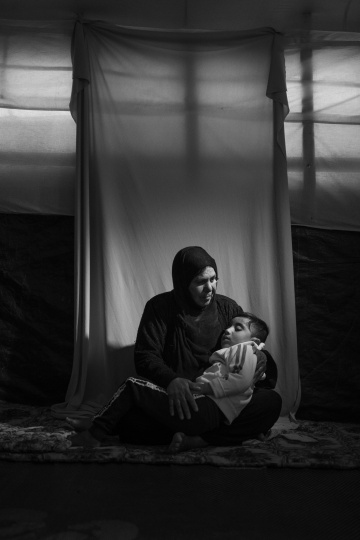
Khedir would have to wait several months before undertaking sessions with the girls. If he started too early, he explained, he risked retraumatizing them. Instead the girls went to the play center for children who escaped ISIS. It was at the Sharia camp, in a fenced-off area with monkey bars, hopscotch ladders, a garden and a mural of two pandas. The children came on Fridays and Saturdays from the nearby camps to play music, paint, learn about computers and take English classes. The man in charge, Salam Darwish, told me, “We never ask what happened, and we never ask where they were.”
On a Saturday when I visited, about 30 children showed up, most of them between 6 and 14, and most of them girls. One older boy, a 19-year-old named Azhar Suhayil, sulked in a doorway. “I’m taking English classes, because there is nothing else to do in this camp,” he said. He had been an ISIS fighter and said it was fun.
The girls were just finishing art class. Hediya stuffed a pastry in her mouth and pulled Kristina’s hair. Boys jousted with paintbrushes, and girls drew broken hearts on the whiteboard. One boy spoke English with an American accent because his captors were American jihadists. A girl stood to the side and covered her mouth with her sleeve. She hadn’t been able to connect with other children.
On the wall, next to a camp resident’s painting of Edvard Munch’s “The Scream,” the girls pinned their art — drawings of Eid celebrations, unicorns, birds, the holy city of Lalish. I asked Kristina about hers. “It’s my old house in Raqqa,” she said. She wore a gold earring, a gift from her ISIS mother. “I liked her,” she said. “In Baghouz, when she left, I cried for the children, and they cried for me.”
The girls gathered in the doorway. They said where they were from and described how badly they were beaten. Kristina sang a beautiful song in Arabic. The girls were quiet and listened. The song was melodic, like a lullaby.
“The path of fighting is the path of life,” my translator began. “So amidst an assault, tyranny is destroyed. And concealment of the voice results in the beauty of the echo.”
It was a popular Islamic State anthem, one they played in the beheading videos. Kristina closed her eyes and tipped her head to the sky. “I love it,” she said.


